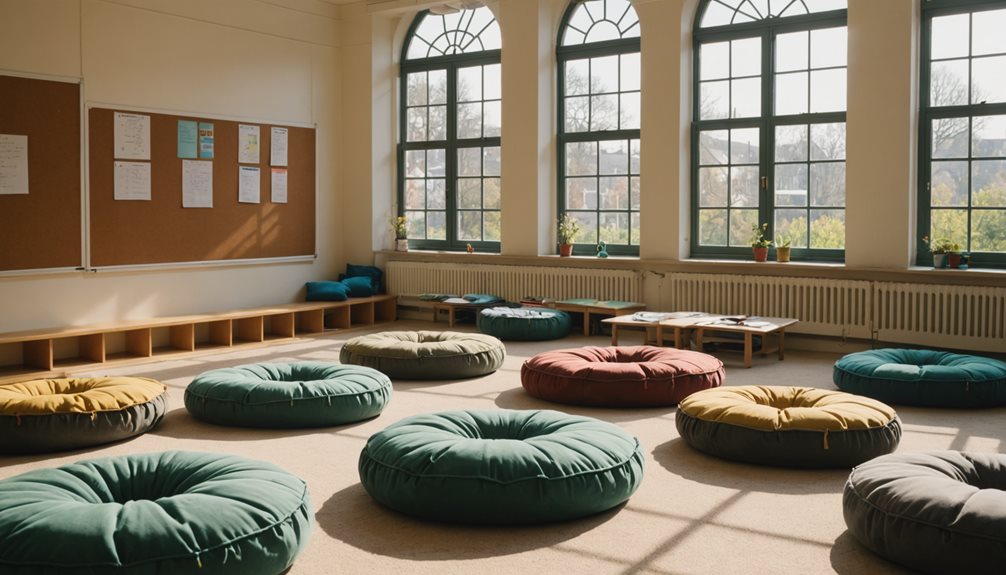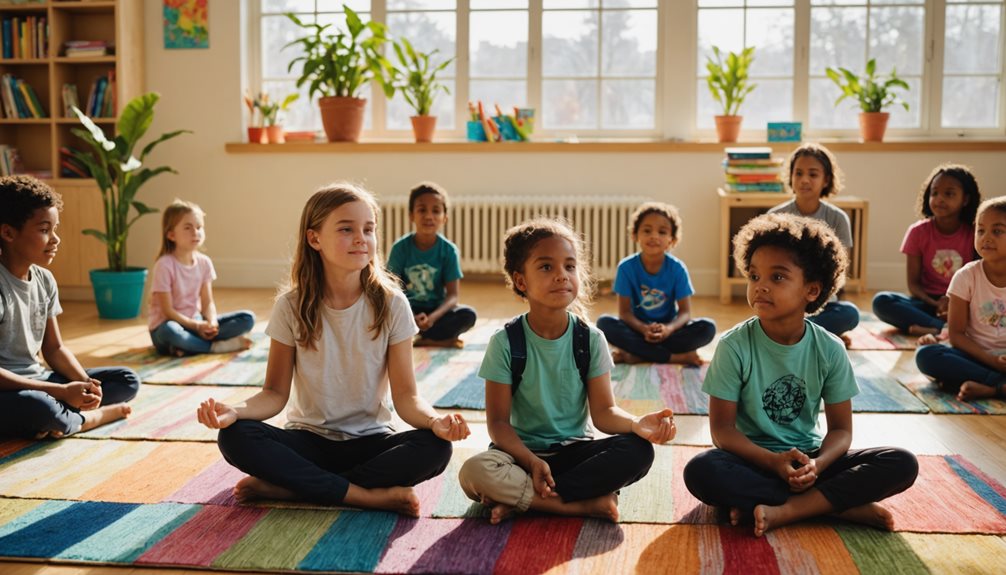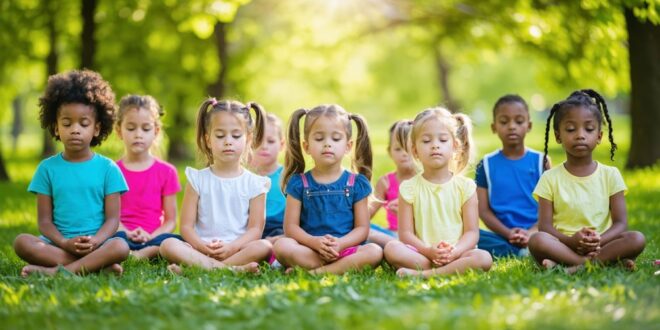If you’ve ever wondered how children can become more aware of their feelings and surroundings, you’re not alone. Mindfulness for kids isn’t just about sitting still—it’s about helping them tune in to the present moment, manage big emotions, and grow empathy. As you look for ways to nurture their resilience and focus, you’ll discover practical steps that can make mindfulness both enjoyable and meaningful for young minds.
Key Takeaways
- Mindfulness for kids is paying full attention to the present moment without judging thoughts or feelings.
- It helps children become more aware of their emotions, thoughts, and surroundings.
- Regular mindfulness practice improves attention, focus, and emotional self-regulation in children.
- Simple activities like mindful breathing, sensory games, and body scans introduce mindfulness to kids.
- Mindfulness fosters empathy, reduces stress, and supports better relationships with peers and family.
Understanding Mindfulness for Children

When children engage in mindfulness practices, they learn to observe their present thoughts, emotions, and environment with a nonjudgmental attitude.
Introducing mindfulness techniques provides children with structured methods to increase awareness of their internal and external experiences and to develop their capacity for self-regulation.
Research suggests that regular mindfulness practice can help children improve attention, manage emotional responses, and reduce stress by influencing the brain’s stress response mechanisms.
Incorporating these skills early in life may contribute to better emotional management and coping strategies as children encounter various challenges.
Key Benefits of Mindfulness Practices
Research indicates that mindfulness practices can provide several benefits for children. When introduced to mindfulness, children gain strategies to manage stress and navigate challenging emotions.
These practices can promote self-awareness and support the development of emotional regulation skills, which may contribute to reduced emotional outbursts and more appropriate responses to difficult situations.
In addition, mindfulness has been linked to improvements in attention, focus, and concentration, which can positively influence learning and social interactions.
Regular mindfulness practice may also foster empathy, aiding the development of supportive peer and family relationships.
Evidence suggests that these benefits are relevant for a wide range of children, including those diagnosed with attention deficit hyperactivity disorder (ADHD), and can contribute to improved overall well-being and resilience.
How to Explain Mindfulness to Kids
Mindfulness can be explained to children as the practice of paying careful attention to the present moment, without making judgments about their thoughts or feelings.
To make this concept accessible, it’s effective to use practical questions such as, “What do you notice around you?” or “How does your body feel?” These questions encourage children to observe their experiences as they happen.
Practicing mindfulness with children can include straightforward activities, such as focused breathing exercises or engaging in sensory awareness games. Maintaining a straightforward approach and incorporating mindfulness into daily routines can help children develop an increased awareness of their emotions and thoughts.
This awareness may support them in managing their emotional responses and handling challenging situations more effectively. Regular, calm reminders can assist in establishing mindfulness as a natural part of daily life.
Creating a Mindful Environment at Home and School

To support the development of mindfulness habits in children, it’s effective to incorporate straightforward mindfulness practices into regular routines at home and at school. Allocating specific times for activities such as mindful breathing exercises or quiet reflection periods can help establish consistency.
Participating alongside children in mindfulness exercises, including sensory games or guided meditations, may facilitate engagement and encourage social connection. Facilitating open discussions about emotions and experiences contributes to the development of emotional awareness and self-regulation in children.
Recognizing incremental progress can reinforce continued participation. Providing children with age-appropriate resources, such as mindfulness-focused literature or digital applications, enables them to independently explore mindfulness practices. This approach can foster greater self-awareness and confidence over time.
Simple Mindfulness Activities for Children
Several mindfulness activities can support the development of focus, emotional regulation, and self-awareness in children.
For example, teddy bear breathing involves placing a stuffed animal on the child’s abdomen and observing its movement as the child breathes, which may help increase awareness of their own breath.
Mindful eating encourages children to take smaller bites and notice the texture and taste of their food, potentially fostering greater appreciation and attention during meals.
Body scan exercises prompt children to close their eyes, pay attention to physical sensations in different parts of the body, and consciously release areas of tension.
Additional practices, such as guided breathing exercises and sensory observation games, are also used to help children become more attuned to their physical state and immediate environment.
These activities are generally simple to implement and can be adapted to suit various age groups and settings.
Mindfulness Tools and Resources for Kids
Mindfulness tools and resources for children are available in a variety of formats to support accessible and effective practice. Mobile applications such as Calm provide guided meditations and breathing exercises specifically developed for younger users. These can assist children in managing stress and regulating emotions.
Mindfulness-themed books for children frequently utilize age-appropriate stories and practical exercises to introduce core concepts. Structured curricula, like the “30 Days of Mindfulness in the Classroom” program, are designed to integrate mindfulness into the school environment on a regular basis.
Additional resources include sensory-based activities, such as making glitter jars, which aim to increase focus and sensory awareness. Guided audio exercises are also tailored to different age groups to ensure content is suitable and relevant.
Collectively, these tools offer a range of options for parents, educators, and caregivers seeking to incorporate mindfulness practices into children’s daily routines.
 Mindful Vitals This is a blog about health.
Mindful Vitals This is a blog about health.

